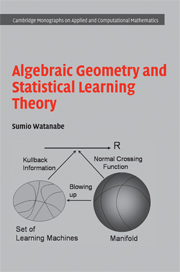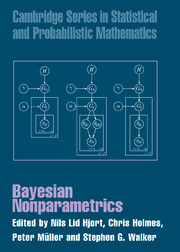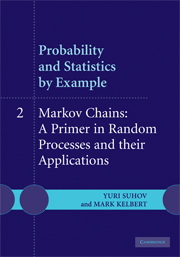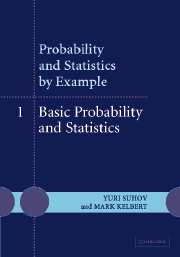Refine search
Actions for selected content:
2348 results in Statistical theory and methods
10 - Alternative variance parameterizations
-
- Book:
- Negative Binomial Regression
- Published online:
- 05 June 2012
- Print publication:
- 17 March 2011, pp 284-345
-
- Chapter
- Export citation
References and further reading
-
- Book:
- Negative Binomial Regression
- Published online:
- 05 June 2012
- Print publication:
- 17 March 2011, pp 532-540
-
- Chapter
- Export citation
14 - Count panel models
-
- Book:
- Negative Binomial Regression
- Published online:
- 05 June 2012
- Print publication:
- 17 March 2011, pp 447-501
-
- Chapter
- Export citation
9 - Negative binomial regression: modeling
-
- Book:
- Negative Binomial Regression
- Published online:
- 05 June 2012
- Print publication:
- 17 March 2011, pp 221-283
-
- Chapter
- Export citation
Index
-
- Book:
- Negative Binomial Regression
- Published online:
- 05 June 2012
- Print publication:
- 17 March 2011, pp 541-553
-
- Chapter
- Export citation
8 - Negative binomial regression
-
- Book:
- Negative Binomial Regression
- Published online:
- 05 June 2012
- Print publication:
- 17 March 2011, pp 185-220
-
- Chapter
- Export citation
7 - Overdispersion
-
- Book:
- Negative Binomial Regression
- Published online:
- 05 June 2012
- Print publication:
- 17 March 2011, pp 141-184
-
- Chapter
- Export citation
Appendix B - Data sets, commands, functions
-
- Book:
- Negative Binomial Regression
- Published online:
- 05 June 2012
- Print publication:
- 17 March 2011, pp 530-531
-
- Chapter
- Export citation
Appendix A - Constructing and interpreting interaction terms
-
- Book:
- Negative Binomial Regression
- Published online:
- 05 June 2012
- Print publication:
- 17 March 2011, pp 520-529
-
- Chapter
- Export citation
4 - Methods of estimation
-
- Book:
- Negative Binomial Regression
- Published online:
- 05 June 2012
- Print publication:
- 17 March 2011, pp 43-60
-
- Chapter
- Export citation
5 - Assessment of count models
-
- Book:
- Negative Binomial Regression
- Published online:
- 05 June 2012
- Print publication:
- 17 March 2011, pp 61-76
-
- Chapter
- Export citation
6 - Poisson regression
-
- Book:
- Negative Binomial Regression
- Published online:
- 05 June 2012
- Print publication:
- 17 March 2011, pp 77-140
-
- Chapter
- Export citation

Algebraic Geometry and Statistical Learning Theory
-
- Published online:
- 10 January 2011
- Print publication:
- 13 August 2009

Bayesian Nonparametrics
-
- Published online:
- 06 January 2011
- Print publication:
- 12 April 2010

Probability and Statistics by Example
-
- Published online:
- 11 November 2010
- Print publication:
- 24 April 2008

Probability and Statistics by Example
-
- Published online:
- 11 November 2010
- Print publication:
- 13 October 2005
10 - Combination, Relevance, and Comparability
-
- Book:
- Large-Scale Inference
- Published online:
- 05 September 2013
- Print publication:
- 05 August 2010, pp 185-210
-
- Chapter
- Export citation
Acknowledgments
-
- Book:
- Large-Scale Inference
- Published online:
- 05 September 2013
- Print publication:
- 05 August 2010, pp xii-xii
-
- Chapter
- Export citation
Index
-
- Book:
- Large-Scale Inference
- Published online:
- 05 September 2013
- Print publication:
- 05 August 2010, pp 258-263
-
- Chapter
- Export citation
4 - False Discovery Rate Control
-
- Book:
- Large-Scale Inference
- Published online:
- 05 September 2013
- Print publication:
- 05 August 2010, pp 46-69
-
- Chapter
- Export citation
